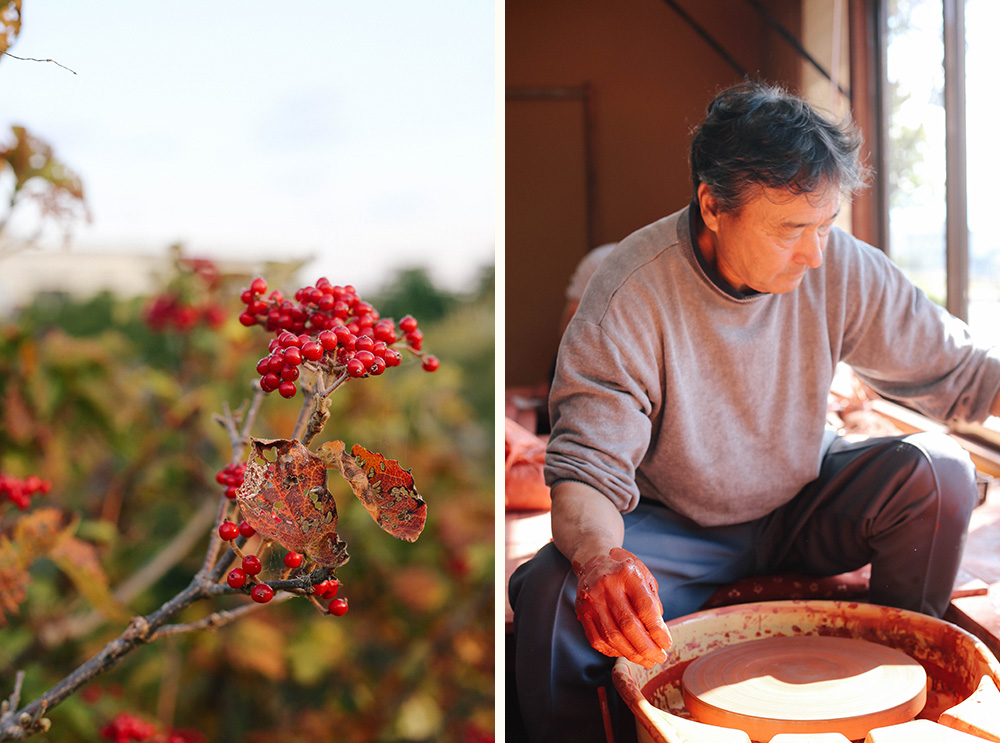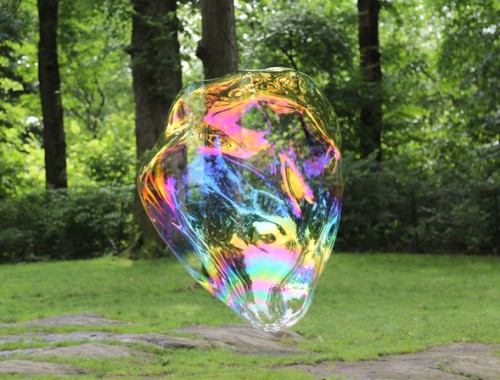
When I first went abroad years ago, I can remember my parents advice not to visit the usual destinations, but to go to places more remote and interesting. I’ve tried to follow their advice ever since. When a place looks hard to reach on a map, I become even more determined to visit. This is what led me to Sado, a large island sitting north of Niigata in the Sea of Japan. With a population of about 63,000 the island is most famous for its mountain ranges and history of gold mining.

NINJIN GUESTHOUSE & BAR (ゲストハウス&バー人参)
I stepped off the Joestsu Shinkansen in Niigata (1.5 hours from Omiya in Saitama) to pouring rain. After a long walk I was relieved to arrive at Ninjin Guesthouse a gorgeous old machiya (traditional wooden home) converted into an inn. My warm hosts were watching an amusing game show in the bar and took me on a tour of the house with its sliding screens and shared spaces. Each guest has their own capsule; a mini room with a futon and lamp, all thoughtfully considered and perfect for a comfortable sleep.
 NIIGATA TO RYOTSU (両津市)
NIIGATA TO RYOTSU (両津市)
I woke with the sun and headed out to explore the Furumachi neighborhood before taking the first ferry. Arriving at the Sado Kisen terminal I was relieved to see other people; at least I wouldn’t be crossing the wild ocean on my own. Konbini snacks served as breakfast before boarding the jetfoil, an express ferry that takes only an hour from Niigata to Ryotsu. It was a bumpy ride but the crowd of unperturbed locals kept me calm.

RYOTSU TO AIKAWA (相川)
My first glimpse of Sado surprised me, it was so much bigger than I imagined; with two huge mountain ranges running along it. I purchased a bus pass for unlimited rides and boarded a Honsen Line bus bound for Aikawa, one of the many towns lined with traditional wooden homes. The bus wound between the two mountain ranges, straight across the island and I was in awe of the landscape either side of me.

AIKAWA GINO DENSHO TENJIKAN (相川技能伝承展示館)
My destination was a traditional skills museum focusing on local crafts, Aikawa Gino Densho Tenjikan. My morning class was in a local specialty, mumyoiyaki pottery. The clay from the nearby mines contains iron oxide and has a distinct red color, with the fired result making a surprising metallic sound when tapped. Our teacher was thorough in background and technique, showing us how to hold our hands and exactly what to do. I created a small tea cup or yunomi, before eating my bento lunch in the sunlit workshop.

AIKAWA (相川)
I took a neighborhood stroll around Aikawa where I was inexplicably filmed for television while looking at some local sights, before wandering along the river with its ramshackle machiya. The wooden homes formed narrow alleys with the occasional washing hanging out to dry. Due to the season, I also saw many onions and persimmons hanging under eaves and in windows. The persimmons are used to make hoshigaki, the peeled fruit is dried and massaged for several weeks resulting in a chewy and sweet treat.

SAKIORI RAG WEAVING (裂織)
My afternoon class was in rag weaving or sakiori, produced by tightly weaving thin strips of old garments to create new textiles. My instructors were kind ladies and we worked in a gorgeous space. The room was set out with multiple looms and we were surrounded by baskets of fabric. My first task was choosing nuki (balls of rolled up fabric strips) and loom thread colors, an impossible task for a designer. I was overwhelmed by the gorgeous fabrics I could choose from and settled on a collection in pale tonal blues and greens.

I was seated at a ground loom or jibata and taught the simple motions for weaving my first color. I found the process entirely relaxing and soon found myself in a steady rhythm weaving on my own. The ladies sat beside me on the floor, unpicking garments and quietly chatting by the heater. With the last beams of sunlight pouring through the large windows, two hours soon passed. I was pleased to see the result as we unwound my work, a little rough around the edges, but something made with my own hands nonetheless!
 AIKAWA TO IWAYAGUCHI (岩谷口)
AIKAWA TO IWAYAGUCHI (岩谷口)
From the station in Aikawa, my local bus began winding along the northern coast on the Kaifu Line and I was amazed by the views that unfurled from my window. My destination was certainly remote and hard to access, with only a few buses running along the route each day. We wound up and down mountains, passing small towns, facing the ocean the whole way. The sun was setting and orange beams of light shot from the clouds into the water. Passengers slowly disembarked along the way, before only two of us got off at the final stop.
 SOTOKAIFU YOUTH HOSTEL (外海府ユースホステル)
SOTOKAIFU YOUTH HOSTEL (外海府ユースホステル)
I had a tatami room facing the ocean at Sotokaifu Youth Hostel with a warm futon, essential in the chilly weather. Dinner was washoku, a traditional seasonal meal shared with the other guests and our hosts. Much of the incredible array of local sashimi was new to me, so we worked together translating the names of each dish. The sazae (turban sea snails), kamenote (goose barnacles) and awabi (abalone) were highlights. Over dinner we swapped stories and I felt incredibly lucky to spend time with such inspiring people. I took a hot bath before bed, listening to the crashing waves outside as I feel asleep.
 I woke before sunrise, leaving me with ample time for a coffee and a wander along the beach. The water was wild, with a pink sunrise and a few fisherman on the shore. The bamboo structures along the coast reminded me of the fish drying racks in Norway, though these haza structures are used for drying rice. Returning to take the bus, my host Hisae emerged from the inn to come and see me off. I’ll never forget the kindness I encountered during my stay, my heart swelled as she waved off the bus. Iwayaguchi turned out to be one of the most special places I’ve visited. One of the other guests has been returning for over 30 years!
I woke before sunrise, leaving me with ample time for a coffee and a wander along the beach. The water was wild, with a pink sunrise and a few fisherman on the shore. The bamboo structures along the coast reminded me of the fish drying racks in Norway, though these haza structures are used for drying rice. Returning to take the bus, my host Hisae emerged from the inn to come and see me off. I’ll never forget the kindness I encountered during my stay, my heart swelled as she waved off the bus. Iwayaguchi turned out to be one of the most special places I’ve visited. One of the other guests has been returning for over 30 years!
 SENKAKUWAN BAY (尖閣湾)
SENKAKUWAN BAY (尖閣湾)
The bus wound back along the northern coast, with locals jumping on board every now and then. A kind man gifted me some curious omiyage (or souvenir) a stack of papers handwritten in Japanese. I’m looking forward to finding out their translation! I disembarked at Senkakuwan Bay, an area of coastline famous for its jagged rock formations. I wandered down to the edge and found a hiking trail, which offered stunning views. The sun glowed as it rose over the mountains behind me and out to the ocean. The trail took me between rice fields and the cliff edge and I loved having this dramatic place all to myself.
 SENKAKUWAN TO AIKAWA
SENKAKUWAN TO AIKAWA
Given the narrow roads and precarious bends along the coast, it probably wasn’t the wisest idea but I decided to hike back to Aikawa. The views were incredible and the charming towns I wandered were so much more interesting on foot. Few people were awake at this hour, so the villages with their wooden houses felt unreal. Many buildings were sadly abandoned, though beautiful with vines crawling all over them. I passed terraced rice fields and shrines, all with views of the ocean.
 AIKAWA TO SAWATA (佐和田)
AIKAWA TO SAWATA (佐和田)
Curious to see what the town of Sawata had to offer, I took a bus along the Kaifu Line. I wandered along the main shopping street, which was a mixture of shuttered businesses and the occasional clothing shop or bakery. It’s disheartening to see towns with so many places closed. I also swung by a local cafe I’d been planning to visit ever since I discovered Matsushiba-san, though he was sadly closed for the day!
 MUMYOUIYAKI GYOKUDOU KAMAMOTO (玉堂窯元)
MUMYOUIYAKI GYOKUDOU KAMAMOTO (玉堂窯元)
I strolled along the local beach, which sparkled so much it was blinding; before another pottery wheel class, this time at Mumyouiyaki Gyokudou Kamamoto. I’ve discovered each teacher has their own methods and it’s interesting learning different techniques. My instructor had an open approach; I was encouraged to try whatever I liked and he would chuckle and give me advice as I worked. Watching him craft things so quickly I was in awe. I could watch artisans like him all day, making such fine-tuned crafts look like a piece of cake.
 SUWA SHRINE (諏訪神社)
SUWA SHRINE (諏訪神社)
The local Suwa Shrine was beautifully dappled in sunlight. With a large red gate and a number of buildings, I was drawn to the main shrine, a mint green color; something I’ve not seen before. Despite my dream of circling the whole coastline of Sado and the excellent bus network that goes most places, some lines only run once or twice a day – so it was time to head back to Ryotsu, winding back between the mountains.
 RYOTSU TO NIIGATA
RYOTSU TO NIIGATA
Before leaving, I found it difficult to choose my omiyage as always! Sado is famous for its gold and toki (crested ibis) along with produce such as persimmons, pears, rice, sake and butter. I ended up selecting some mochi, with the packaging winning me over. I boarded the next ferry bound for Niigata and crossed my fingers for a calmer ocean. I was in luck and scored some lovely views of Sado as it receded into the distance.

THE COFFEE TABLE
Back in Niigata I made a quick detour to The Coffee Table just before closing time. The interior is gorgeous, with concrete walls and modern industrial furniture. The menu includes sandwiches and treats like banana bread, along with goodies to take home like Prana Chai from Australia and Marou Chocolate from Vietnam. It’s a bustling space, with customers constantly coming and going. It was pleasure to meet the lovely owner and barista Wataru, who has also lived in Melbourne! My latte was perfect and well worth the visit.

On the shinkansen home, there was a beautiful sunset making it impossible to focus on reading my book. The patchwork of rice fields was dotted with wooden houses and campfires with farmers tending to them. In the distance the mountains faded to shades of blue before disappearing into the darkness. My trip was a memorable journey to a truly remote and very special place. I hope I can make it back someday!




No Comments